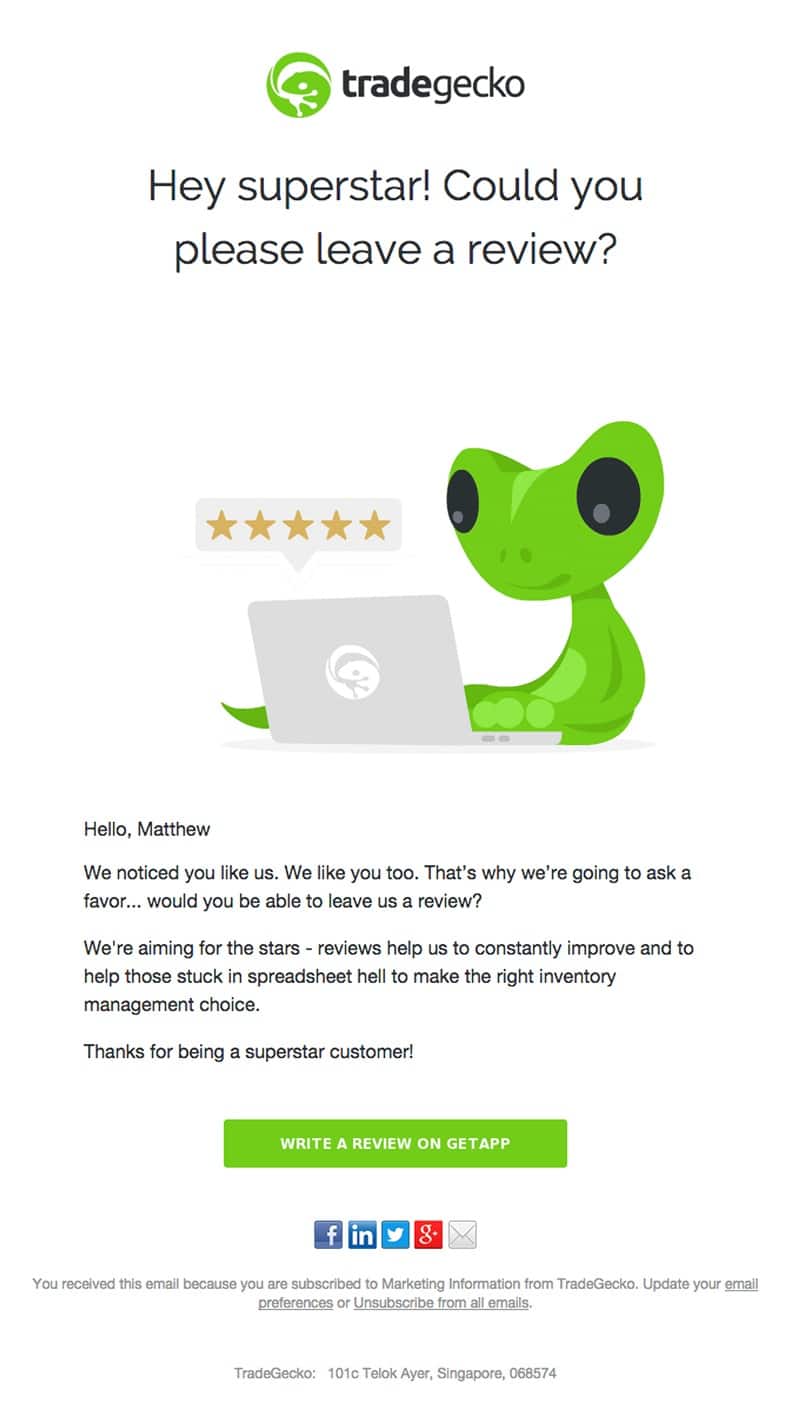It’s hard to believe 2020 is upon us.
Time flies and a lot changes in a year, including your marketing goals. But that doesn’t mean you, as a marketer, have to start fresh.
It does mean you can approach your objectives with a renewed mindset. Combine that attitude of openness with a toolbox full of tomorrow’s strategies, and you have a formula for success.
Read on to discover the tips you’ll need to excel with your email marketing strategy in 2020. These tips will encompass various technologies and channels. Plus, all of them tie back into using email as the centerpiece of your marketing.
Tips for mastering your email marketing strategy in 2020 and beyond
The marketing industry, primarily email marketing, is leveraging more resources than ever before. Actionable insights and innovative tools are becoming the norm. Along with a focus on multi-channel content, this can put you on track to a productive, successful 2020.
Focus on feedback in emails.
Emails are used for tons of purposes. They extend sales offers, share blogs, and even promote events. However, there’s another trend that’s exploding with popularity: user feedback.
When you’re marketing your own products, customers are getting recommendations from the same company trying to make the sale. There’s obviously some bias there, even if you truly stand behind what you offer.
Previous buyers, however, are more relatable. Over 90% of people read online reviews, while 84% of them trust those reviews as much as a personal recommendation. To make your emails a little more personable, and the offers in them a little more trustworthy, focus on customer feedback.
It never hurts to send emails letting your readers know about the good reviews you’ve received. Use a star rating and comments, highlighting those that show specific qualities your customers like about your business.
To keep a constant cycle of feedback going, you can also use emails to ask for it.
Source: Really Good Emails
You could trigger these email requests based on various criteria. After a certain number of purchases or a certain length of subscription, it’s a good idea to ask for feedback. Automated feedback requests allow you to keep the conversation going or, at least, give customers a gentle nudge to share their opinion.
There are many functions for automation, such as welcomes, lead nurturing, and special offer promotions. 2020 will see feedback becoming a more popular technique to use with emails as a way to keep conversations going and generate sales.
One final benefit. Get a negative review? That’s just guidance for how to improve. Better yet, you could link all the negative reviews into a single segment for a recovery effort.
Using insights, not just data.
There’s no denying that successful marketers rely on data to make productive decisions. There’s plenty of it to go around. However, at a point, it becomes overwhelming.
Traffic trends, conversion rates, click-through data, open percentages, bounce rates, sales numbers, retention data—all of it’s important, but it’s a lot of numbers to track. In a busy company with hundreds of thousands or even millions of subscribers on your email list to communicate with, time is valuable.
You don’t always have time to translate that data into actionable insights. In 2020, more marketers will be turning to tools to do it for them.
Take MAXG, for example. This tool offers everything from recommendations about your landing pages to benchmarking for how well your blogs are performing. It draws off real data, but the benefit is that you don’t have to analyze the data and reach the conclusions yourself.
Source: MAXG
From analyzing how fast your pages load to seeing how your older content is holding up, tools like this can give you real advice you can use to make the most out of your digital marketing efforts.
Shoppable social media posts
Social media has etched out a comfortable spot as a marketing mainstay by now.
This won’t change in 2020. What will change is the way social media posts are used, namely as a gateway to purchases.
For decades, marketers have been brainstorming ways to put their product offers before as many people as possible. How about 3.2 billion people? That’s the number of social media users worldwide, and, for reference, that’s about 42% of the world’s current population.
Even when you factor in that the number of potential buyers may not actually be 3.2 billion, that’s still a ton of potential sales. Social media posts are no longer about just sharing content, keeping conversations going, and promoting your brand. They can now function as a one-click sales tool.
By clicking on a simple Facebook, Twitter, or Instagram post, users can populate their payment info in and confirm a purchase with a product promoted on one of these platforms.
Source: Econsultancy
You should also think about shoppable content for your email marketing strategy in 2020. Your social platforms and email content will often mirror each other. They’ll use similar topics and maybe even similar graphics. It’s perfectly logical to input shoppable links into both as well.
This is an example of how content is becoming faster and more interactive. Take how zero-click results are becoming more prevalent with SEO. The fewer actions it takes to give the user what they want, the better.
Before social media shopping posts, the process would likely look something like this:
View an ad on a social post or email > Click through to a product screen > Confirm cart and purchase info manually > Finalize purchase
Taking a couple of steps out of the equation helps customers get what they want faster and gives your social posts much more value. You’re no longer just informing them or chatting with them. You’re helping them get what they need more quickly.
New technologies will tie into your email marketing.
Your email marketing strategy in 2020 will be impacted by a number of technologies. These technologies are growing quickly in popularity, but not all of them are directly related to the inbox.
This makes it more interesting that they can tie back into your email efforts, in addition to providing other useful functions.
One popular technology that’ll continue growing in 2020 is voice search. Even in 2017, over 35 million Americans were using it at least once per month. That’s a year-over-year increase of over 128%.
Voice search is making it easier for users who aren’t exactly keyboarding experts to find what they want quickly. It’s also changing what gets inputted into search engines. When you optimize your blogs and landing pages for voice-based SEO terms, integrate this language into your emails for greater uniformity across your channels.
Speaking of language, users may be chatting with more than just people more often in 2020. Chatbots help you give customers the attention they need without forcing them to wait. You’re also getting valuable insights you can use for future emails. Depending on the experience they’re having and whether it was resolved properly, you can send an email to follow up accordingly.
Personalization
Personalization is an email marketing cornerstone, but it can be used on nearly any channel. The best part is that it helps you maintain a personal connection with viewers, no matter how big your audience is.
The truth is that about 90% of your audience is likely to favor personalized content. Not only content that features their names and other personal data, but content that focuses on their buying and browsing habits.
Personal emails are a lot easier to focus on for one reason: segmentation. A segmented list allows you to group like-minded users together, making personalized campaigns easier to create. Throw in the individual personal touches, like names, and you have a lot of content that makes every recipient feel like they’re your company’s primary focus.
Personalized content should be a part of an email marketing strategy in 2020 and beyond for two reasons. The first is because it’s so effective. The second is because it’s easier than ever. Since customers are more likely to share more information online today than in the past, you can get the data you need to deliver content specifically tailored to them.
Wrap up
Your email marketing strategy in 2020 and the overall marketing approach, in general, will be similar to those in 2019. However, change will also be on the way. Once you see how things are changing and what tweaks to make, you can make 2020 your most effective year ever for marketing.
- Focus on feedback in emails and use personalized content when possible
- Build your strategies off real insights, not just raw data
- Implement technologies like voice search SEO and chatbots as needed
With 2020 approaching fast and a lot of changes to consider, it’s a good time to rethink your entire email marketing plan. Use these tips along with the ones above to prepare yourself for a productive and successful year.








